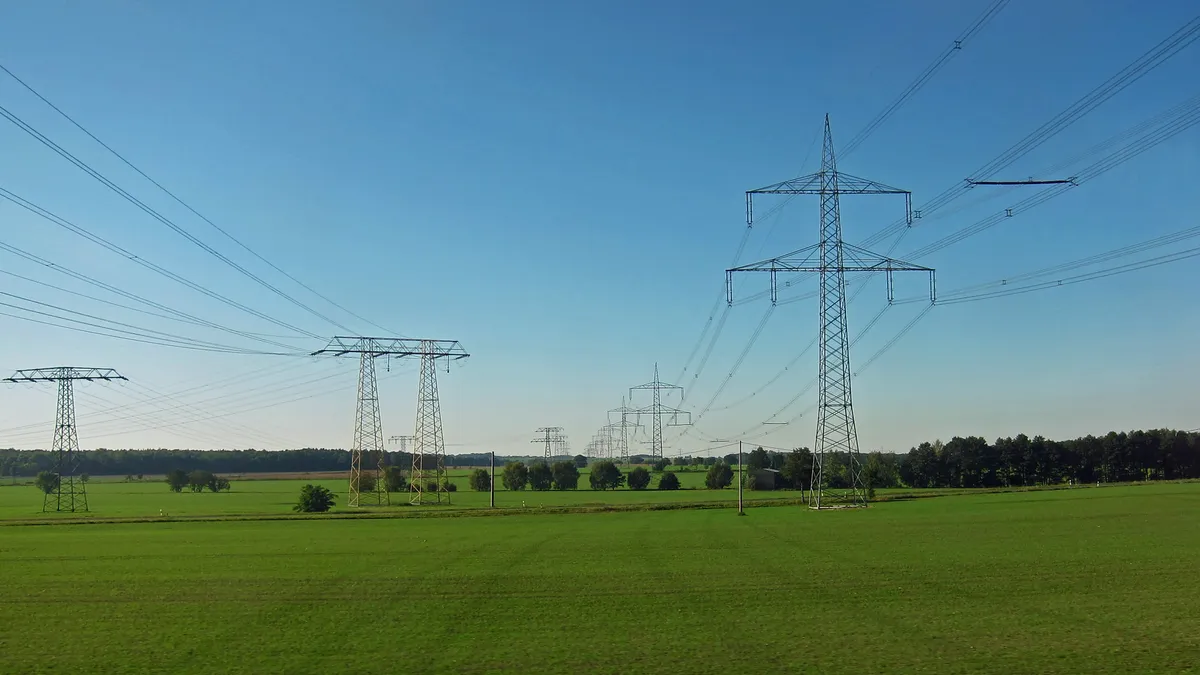Dive Brief:
-
Duke Energy’s capital investment and energy transition plans call for $145 billion in spending over the next decade, with costs up by $10 billion over the company’s previous ten year plan, according to an announcement released Tuesday.
-
Some 85% of the spending will go toward grid modernization and to the company’s transition toward decarbonized generation, according to Duke Energy.
-
Environmentalists met the announcement with some skepticism. “We agree that investments in transmission and distribution are important for our transition to a clean electric grid,” said Maggie Shober, research director at the Southern Alliance for Clean Energy. “We’ll be looking closely at Duke’s proposals to be sure they aren’t gold-plating their system to pad shareholder’s wallets.”
Dive Insight:
Duke Energy says it is on track to reach net-zero emissions by 2050, and to hit an interim goal of slashing indirect scope 2 and 3 emissions 50% by 2035. But environmental advocates remain critical of the company’s approach to decarbonization, which they say relies too heavily on natural gas and emerging technologies that remain unproven.
The company’s capital expenditure plan includes $75 billion for grid modernization and hardening, and $40 billion for zero-carbon generation including solar, wind, battery and nuclear technologies. The company said it has also set aside $5 billion for hydrogen-enabled natural gas technologies.
“We are well-positioned to meet our net-zero emissions from electricity generation by 2050 goal.... In fact, we’ve reduced emissions 44% from 2005 levels already and the confidence we have in exceeding our 2030 goal enabled us to set a second interim goal of 80% reduction by 2040,” said Katherine Neebe, chief sustainability and philanthropy officer at Duke Energy. “We believe in a balanced pace of change and are decarbonizing as fast as we can while also maintaining affordability and reliability.”
However, the company’s plans received a lukewarm reception from area environmentalists, who remain critical of Duke’s stated intent to continue investing in natural gas generation.
While it was encouraging to read that Duke is trying to track and set reduction goals for Scope 2 and 3 emissions, Shober said, “the language about trying to mitigate the impacts of volatile fuel costs rings hollow from a company that has proposed building a significant amount of new gas capacity in the upcoming years.”
In addition to criticizing the company’s ongoing plans to build new gas generation, environmental leaders also expressed skepticism about the dollar amount dedicated to transmission, and Duke’s plans to replace fossil generation with hydrogen and small modular nuclear reactors. Those technologies remain unproven, according to NC Warn Executive Director Jim Warren, who said Duke continues to ignore more practical solutions such as rooftop solar with storage and demand side management.
“We could decarbonize North Carolina with distributed energy that includes utility-scale at the same general size they’re doing recently — but moving it closer to the load centers where the juice is being used,” Warren said. “You can eliminate billions of dollars in transmission corridors and do it a lot faster this way.”
Duke Energy holds that their decarbonization plans remain consistent with the Transition Pathway Initiative’s guidelines for limiting global warming to 2 degrees and balances the company’s climate ambitions with customer needs.
“A responsible pace of change is one that balances our climate goals with our customer commitments in delivering affordable and reliable energy,” Neebe said.













